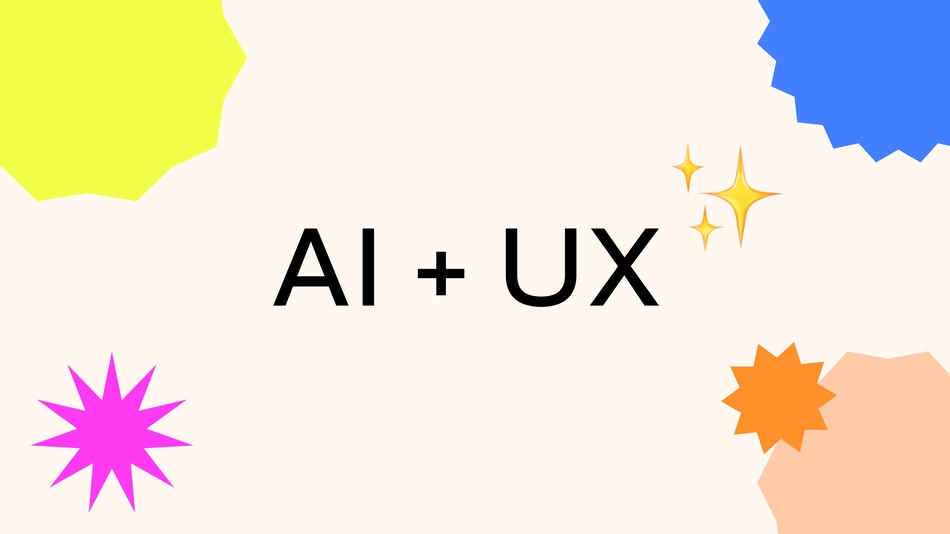- ai goodies ✨
- Posts
- ⚡️ The impact of AI on Design Careers
⚡️ The impact of AI on Design Careers
AI will revolutionise the way we work as designers. Let's find out how!

✨ The impact of AI on Design Careers ✨
Welcome back to the AI Goodies Newsletter! 💜
In this issue, I will be giving you an insight into how the industry evolution will be slowly shaping our framing from Designer vs AI to a Designer & AI role.
✅ What AI Will replace
Repetitive tasks: pixel calculation, distances between components
Manual work: background removal, color change of components, cropping assets & filling in the background (I recommend trying out Adobe’s Generative fill & expand), resizing images, turning wireframes into initial UI designs (Uizard had this capability for years; also check out Airbnb’s wireframing sketch tool)
Tasks requiring repetitive thinking: Automatic context-aware translation, ensuring consistency, responsive design testing
❌ What AI Won’t replace
Empathy: Only humans can imagine and grasp what the other person feels. Even though AI systems might mimic a conversational, apparent empathy or compassion, computers will never really feel, regardless of how well they’ll be able to act like that. We’ll forever be uniquely positioned to deeply understand the people we are designing for.
Combining & using multidisciplinary knowledge: Designing any product requires putting together knowledge from psychology, UX theory, content architecture, sometimes sociology, and research - AI has the information but lacks the systems thinking required to carefully put these together into something meaningful.
Qualitative user research: understanding how users feel about a product when making design decisions. The interpretation of multiple data points, qualitative against quantitative validation, all under the bigger system that these need to be interpreted under, is a space in which only we can connect all the dots.
🕊️ The way to see & make peace with AI
AI is an assistive technology, rather than a technology created to steal your job.
So AI should enable us to perform better in our jobs, instead of replacing us. It’s here to augment our workflows - think of it as an exoskeleton that enhances your natural strong points as a designer while covering in for the weaker ones. It’s your junior assistant. 😉
🌟 How will AI shape design careers?
There will be all sorts of interesting by-products as consequence of how AI is transforming our roles.
AI is making us more productive by increasing our efficiency. It will replace mundane tasks and allow us to focus on the most impactful aspects of our work. This should make us happier and support us in finding more meaning in our work.
AI can augment our natural capabilities. Imagine your best version as a designer - AI can help you get there.
We will have to design for AI with AI: we will integrate AI in our design process at each stage: research, iteration, prototyping etc
It will make us appreciate the human aspect of design - knowing that so much of what we see is AI-generated will make us rethink our values. I believe that we will see a societal shift in what we find important and worth admiring.
It will allow us to focus even more on the user value, by giving us more time to optimise for important goals instead of menial details.
When you invent the ship, you also invent the shipwreck […] Every technology carries its own negativity, which is invented at the same time as technical progress.
So AI is not inherently bad. It’s just another tool that humanity created in its journey toward progress, and it depends on us as an industry what we make of it - used well, in the right hands, it can be an absolute force for good.
🖌️ Designing For AI
In Jakob Nielsen’s article (below) for the NN Group, he highlights the important paradigm shift we’re all in the middle of: we’re now moving away from giving computers one command after another (command-based interactions) to telling the computer what we want to achieve.
We’re entering the era of intent-based outcome specification.
The foundational thinking that should sit at the core of how we design for AI interactions is still being defined at and industry level, but until we align on the design philosophy that we should ground decisions into, I recommend considering a set of design principles that I’ve defined based on my experience as a designer for AI:
Design principles in the Age of AI

I unpack these in a series of talks I gave in the last couple of months, in New York or at SXSW.
👀 Watch my talk on AI: From Worry to Wow 💥
🎧 or listen to my SXSW talk from earlier this year 💥
✨ Articles that sparked my interest
💡 Want to learn more about designing with AI?
I’ve created a course with the Interaction Design Foundation to help you immerse yourself in the world of AI and learn all the essential tools to use in your UX design process. You will learn a AI tool for each stage of the design process:
Definition of problem statement
Research
Analysis
Design (UX & UI)
Prototyping
Testing
Iteration
Check the link below to join my course on AI Design 👇🏼
💜 Next on AI Goodies: 🥁 Episode 3 - Current uses of AI in products 🪄
In the next newsletter I will cover some product use cases that have already been using AI, some for a long time, as well as how we might already surface AI in the products we design for.
Spread the love by sending this newsletter to a friend who would be interested, link below 👇🏼
🎙️ Relevant Podcasts
🔮 AI Goodies, in the spotlight
It was super exciting to discover that within a few weeks of launching my newsletter, AI Goodies was mentioned by UX Tools in their Linkedin Article “How to start designing for AI”. Make sure to check their newsletter out below and subscribe!
✨ For more Goodies, follow me on:
AI & Design Love, Ioana ♥️















